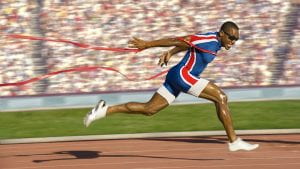Technical Camera Terms
We explored how a camera works including the aperture (focal length) and the shutter speed. The shutter speed changes how fast the photograph is taken. With a slow shutter speed, more light is allowed into the camera. This is normally used for low-light photography, whereas a fast shutter speed helps to freeze motion – this is commonly used when capturing images of motion, for example, running. The aperature is the hole in the lense which helps light to travel through the camera – it is able to change size to let different amounts of light in at a time, also changing the focus of the camera. The larger the hole, the more light passes through the camera to the camera sensor – this makes the photographs brighter. Likewise, the smaller the hole, less light is able to reach the camera sensor, making the photograph darker.
We learnt the best and easiest ways to take photos. To summarise:
- the aperature changes how dark or bright the photograph will come out.
- the shutter speed is how quick the photograph is taken – this adapts what the photograph looks like; blurry or crisp.
For example; a sporting event would require quick shutter speed, because you need to be able to capture the images quickly and for it not to be blurry.
However, if you were taking a photo of a flower the aperture would be important as the focus and light would change if you wanted the flower in focus and the background fuzzy or the whole image in focus.
For each photograph, we also took into consideration the direction, space and angle of the photograph in order to portray a narrative to the audience. For example, an extreme close up is used to convey emotion and helps the audience to feel connected to the character. Whereas, on the opposite end of the scale, an extreme long shot can convey a relationship to the characters and their surroundings and it could also portray loneliness or isolation.
The angle at which the photograph is taken is also very important to take into consideration. A low angle can portray importance and power from the character in the photograph making the audience feel weak and intimidated, whereas a high angle can symbolise that the audience has more power than the character in the photograph because they are looking down on them; it could also connote poverty or vulnerability.
This will help me when producing my music magazine because I will consider what angle and direction will be best to use when creating my narratives through my images and I will also consider what I want my audience to feel when looking at my images.

